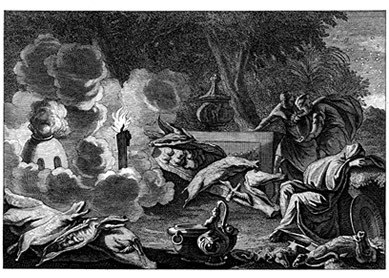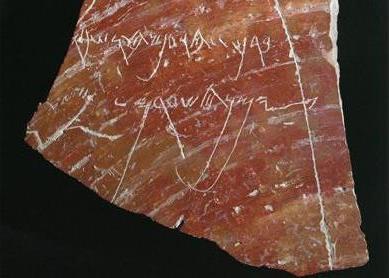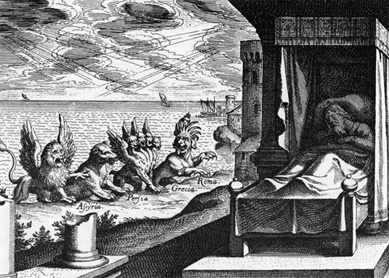Balaam son of Beor is known to us not only from the Hebrew Bible but also from an inscription, found in 1967 in Jordan, that can be dated to the eighth century B.C.E.
According to the lengthy account in the biblical book of Numbers (chapters 22–24), which likely consists of two or more combined literary traditions, Balak, the king of Moab, is frightened by reports of the approaching Israelites and decides to hire Balaam to pronounce a curse upon Israel so that he will be able to defeat them in war. Ancient Near Eastern kings often expected prophets and diviners to pronounce such maledictions upon their foes before battle, and Balaam was apparently known as a famous seer or prophet. God (here called “Elohim”) appears several times to Balaam in a dream and forbids him to curse Israel. Eventually, however, the deity grants Balaam permission to accept Balak’s assignment. What follows is the well-known scene of a talking donkey and a messenger from Yahweh blocking Balaam on his way to proclaim the curse. Finally, Balaam arrives at his destination, yet he ends up arousing the indignation of the Moabite king by repeatedly pronouncing upon Israel several lengthy, beautifully formulated poetic blessings.
Curiously, most other biblical references to Balaam are negative. Though the account described above reports that he refused to curse Israel and rejected the handsome payment offered by the Moabite king, other texts denounce him as a prophet for hire (
As for the nonbiblical inscription found in Jordan, it consists of a plaster text found on the wall of a house at the site of Tell Deir Alla (perhaps to be identified with biblical Sukkoth). The text refers to the same Balaam son of Beor, who receives a terrifying message from the gods. The next morning he cannot eat and weeps aloud. When his people demand an explanation, he tells them he has learned that the so-called Shadday gods have convened a council and decreed to seal the skies with perpetual darkness. (A related name, El Shadday is also used in the Hebrew Bible to refer God; it is usually translated as “God Almighty.”) Although the text is difficult to decipher, what seems to have provoked the gods to bring about this calamity is the pervasive reversal of the natural and social orders (for example, the text reports that hyenas listen to instruction, while the fox’s whelps laugh at wise men.)
Although the biblical story of Balaam was written long after it was thought to have occurred, this nonbiblical inscription witnesses to the tradition of a Transjordanian diviner/prophet named Balaam who answered to gods called Shadday.
Bibliography
- Hackett, Jo Ann. “Balaam.” Pages 569–72 in vol. 1 of The Anchor Bible Dictionary. Edited by David Noel Freedman. 6 vols. New York: Doubleday, 1992.
- Hackett, Jo Ann. “Deir Alla, Tell: Texts.” Pages 129–30 in vol. 2 of The Anchor Bible Dictionary. Edited by David Noel Freedman. 6 vols. New York: Doubleday, 1992.
- Hackett, Jo Ann. “Some Observations on the Balaam Tradition at Deir Alla.” Biblical Archaeologist 49 (1986): 216–22.
- Levine, Baruch. “The Deir Alla Plaster Inscriptions.” Journal of the American Oriental Society 101 (1981): 195–205.




